Optical detection basics
Detectors are an essential part of any spectroscopic instrument. To help you better understand the basics of optical detectors, we have put together a guide below.
The photo diode
We start with a simple photo-diode. A photo-diode converts light (photons) to electrical charge (electrons).
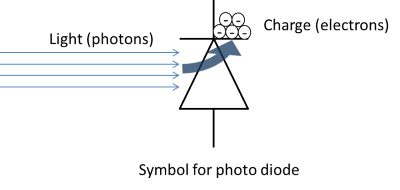
In a simple photo-diode the charge generated by light is immediately converted to (photo) current: IP
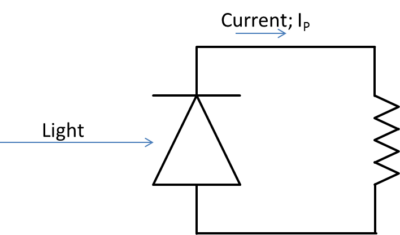
The photo current is instantly on, when you send light on the detector. In a simple photo-diode the charge generated by light is immediately converted to (photo) current: IP
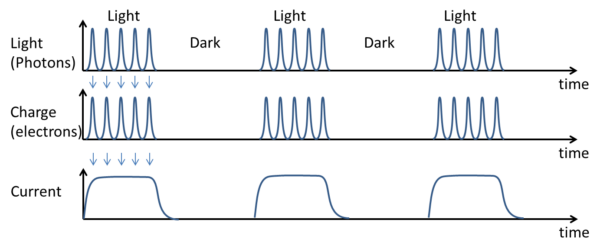
Typical photo diodes for spectroscopy
Single, large area photo-diodes are used in mono-chromator based spectrometers. Here is an illustration of a typical construction of a scanning mono-chromator with a single photo-diode as the detector. The wavelength is selected by rotating the grating.
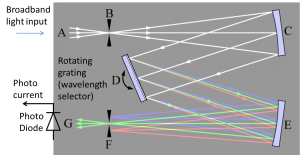
Here is an example of a single photo-diode from Hamamatsu.
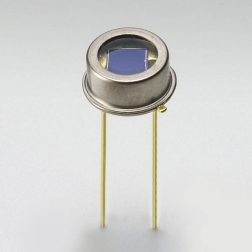
Arrays of photo-diodes can be used for low resolution spectroscopy (< 100 diodes in the array) with a fixed (non-rotation) grating. Each photo-diode generates a photo current proportional to the intensity of the specific wavelength hitting each diode.
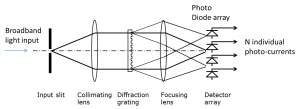
Here is an example of a photo-diode array (Hamamatsu S4111-46Q with 46 photo diodes)

Each diode will have its own pin on the chip because each diode is read out individually. So for a 46 pixel array you need more than 46 pins.
Integrating photo-diode

In an integrating photo-diode the charge (electrons) generated by light is stored in a Capacitor C.
There is no photo current flowing while the integration is ongoing because the switch is open
When the integration is done, the switch is closed and the stored charged is converted to (photo) current IP

Integrating photo-diodes for spectroscopy
CCD’s (Charge Coupled Devices) are arrays of integrating photo-diodes > 100 diodes in the array

Here is an example of CCD array (SONY ILX511B with 2048 pixels)

An integrating detector array only needs 1 pin to read out all the pixels because the photo-diodes are read one by one.
Want to know more?
For further information see below.




